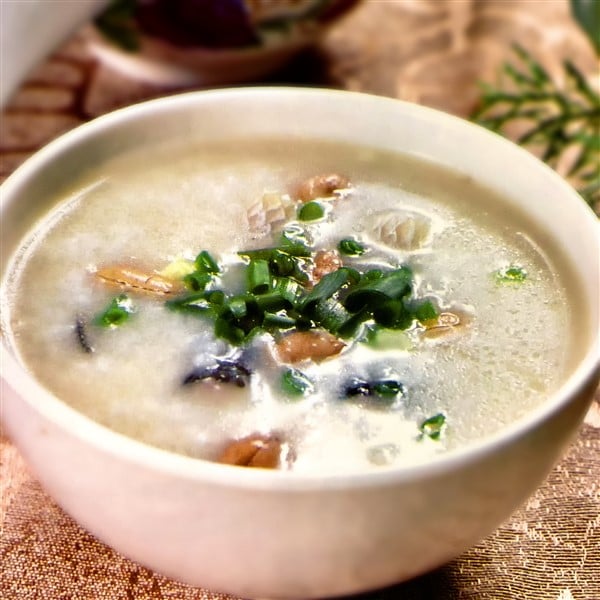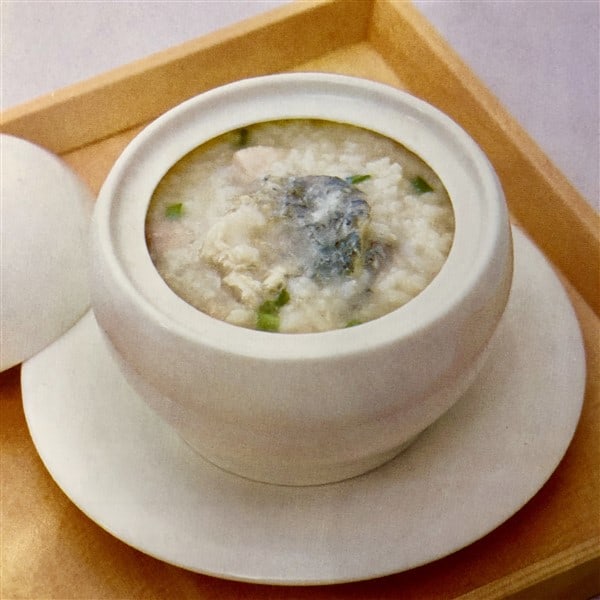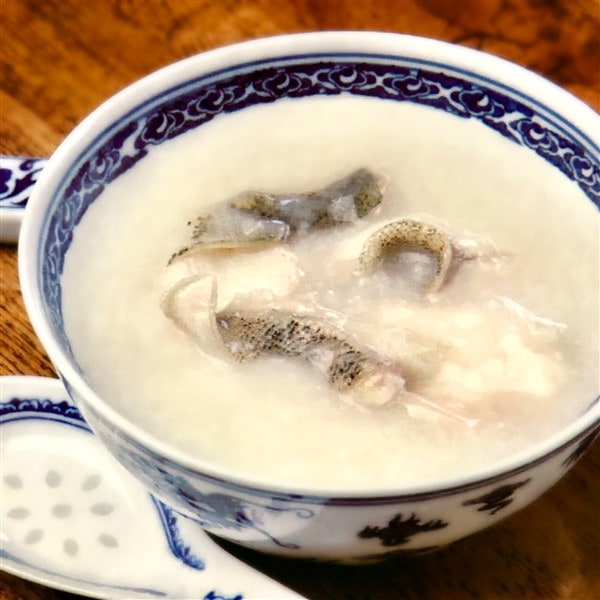Fish Congee
Cantonese people have all sorts of different requirements and cooking methods when it comes to making congee. When cooking over an open flame, they will add ginkgo and lily flowers; this will decrease internal heat and alleviate fever. When adding freshly cooked meat to previously made congee and cooking them together, oil and fat is kept to a minimum, making for a natural flavor and a fresh taste that is ideal for keeping one healthy in modern life. You can even add a little bit of fresh soy milk to congee and then use it to boil sliced fish, pork liver, beef, chicken, snail, meatballs or oysters. This makes for a refreshing, fine-tasting dish. Below we’re going to show you three ways to make Cantonese congee using different kinds of fish as the main ingredient.
Congee and Emotion
When you have eaten plenty of meat and fish, a simple bowl of thin congee can evoke many feelings. Congee is suitable for people of all ages and all constitutions. A hot bowl of congee and two plates of vegetables to accompany it is the most ordinary of meals, and yet few can escape the emotions it provokes. The Ming dynasty poet Zhang Fangxian spoke of it in his poem On Making Congee: “Do not say that the simple life is lacking in flavor, for it is rich in feeling.” This is the truest portrayal of congee. When you are sick, or tired, a bowl of congee is exactly what is needed for comfort. Its mild and lingering taste is often a comfort for the worries of those who travel far away from home. Perhaps Chinese people love congee for the feeling of peace and warmth that it provides.

How to Make Plain Congee – The Base of All Fish Congee Recipes
It is impossible to mention all of the different varieties of fish congee without bringing up what brings them all together – plain rice congee. This is also the congee base we make before we add fish slices and other ingredients into the congee. Cantonese people create plain rice congee with the same care they would afford a five-star dish. Without this enthusiasm, ordinary-looking plain congee would never have become one of the ten great snacks of Guangzhou.
Selecting fresh rice is the most crucial part of making plain congee. If the rice is not fresh enough, the rice congee will not have the right viscosity, nor will it have the right white color. Washing the rice is the second most important aspect of making plain congee. One must wash the rice thoroughly while simultaneously being sure to maintain its nutritional value.
Next, the rice should be soaked for half an hour, and then strained. One must be sure to select the appropriate ratio of rice to water when preparing congee. The type of pot used in making the congee is essential, too; only a clay pot can give the right taste.
Controlling the fire used in cooking congee is the next most important element; use a strong flame to bring the congee to a rolling boil, and a weak flame to cook it thoroughly for roughly one and a half hours.
When you have a pot of fragrantly boiling congee, you must restrain yourself from diving in right away; first, let the congee sit and wait for it to cool down. Slowly scoop away the congee's top layer of thick, bright oil. Serve this part of the congee to any elderly or children who require nutrients, and then your pot of congee is ready to be enjoyed.
The smooth, savory test of congee in your mouth will make you forget all about the labor required to make the dish. Cantonese people favor plain congee not just for its tender, smooth, delicious taste, but also because it enriches and supplements original qi, clears the stomach and intestines, and lubricates the internal organs. Thus, it can be seen that even plain congee has medicinal uses too.


